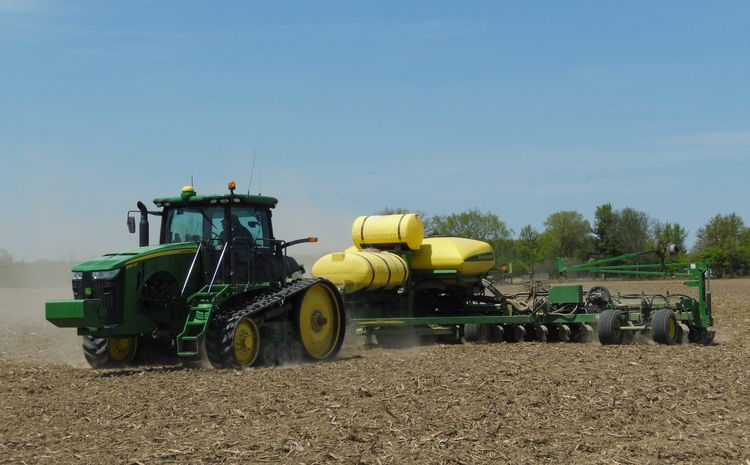Some Michigan soybean producers want to increase soybean yield and net income by applying fertilizer in a 2x2 band at planting—2 inches to the side of the seed furrow and 2 inches below the seed. The high fertilizer prices make it critical for these producers to know for sure if their starter fertilizer program is making them money or costing them money. The best way to find out is to establish replicated strips with and without the starter fertilizer in a field and collect the yield from each strip.
Six soybean producers from across Michigan did this in 2021 as part of the Michigan Soybean On-Farm Research Program, a partnership between Michigan State University Extension and the Michigan Soybean Committee designed to help farmers evaluate management practices, products and equipment. The six cooperating producers compared their starter fertilizer program (fertilizer analysis and application rate) to a no-starter control.
The starter fertilizer programs increased soybean yield by more than 3 bushels per acre at two of the six sites (33% of the time). The yields in the other four sites were not affected by the addition of the starter fertilizer. The starter fertilizer was also profitable at the two responsive sites. However, the added income generated by the starter was only $4.50 per acre while the cost of the fertilizer programs ranged from $35 to $42 per acre at these sites. The four unresponsive sites were not profitable with the losses ranging from $11 to $33 per acre. A detailed summary of the starter fertilizer results is available in the 2021 Michigan Soybean On-Farm Research Report.
The Michigan Soybean On-Farm Research Program is providing farmers an opportunity to evaluate the yield and income effects of their starter fertilizer programs again in 2022. Implementing the starter versus no starter treatments is as easy as turning the pump off in every other planter pass when using planters equipped with hydraulic pumps. We recommend planting six strips of each treatment to reduce the influence of soil variability on the results.
Gathering the yield data at harvest is also easy when using a well-calibrated yield monitor. Participating producers will provide the average yield from each strip and MSU Extension staff will use proven statistical procedures to determine how the starter fertilizer affected yield and income.
Conducting this trial is an easy and accurate way for producers to learn if their soybean starter fertilizer program is profitable. Producers planning to apply starter fertilizer to soybeans in 2022 are encouraged to conduct at least one of these trials on their farm. If you are interested in conducting a starter fertilizer trial on your farm, contact Mike Staton at 269-355-3376 or staton@msu.edu.






